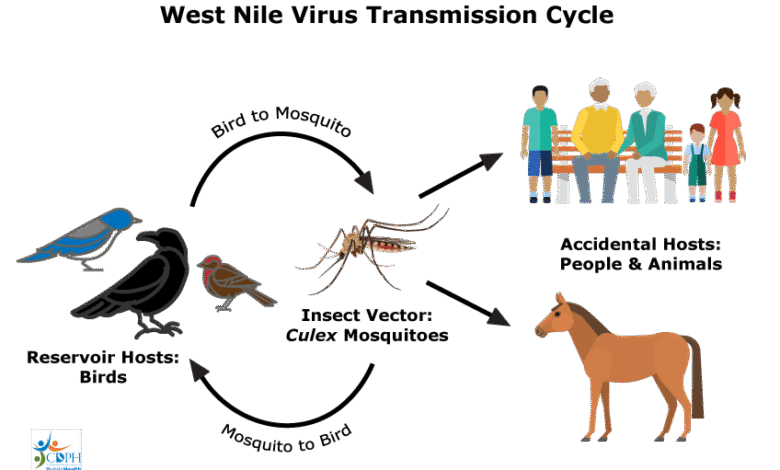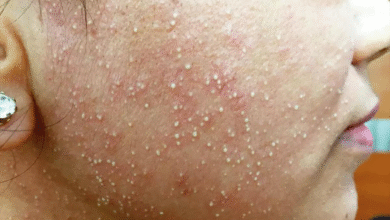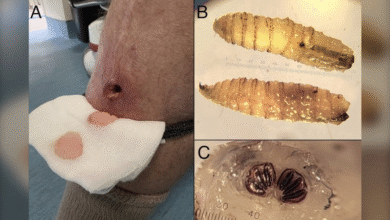West Nile Virus Cases in Kansas: What You Need to Know

West Nile virus is becoming a growing concern in Kansas, with health officials currently monitoring six reported cases this year, five of which have been classified as serious. According to the Kansas Department of Health and Environment (KDHE), three cases of West Nile virus are situated in north-central Kansas, while the other three are found in the south-central part of the state. Alarmingly, most of these instances are categorized as neuroinvasive West Nile virus, which can lead to severe complications including high fever and brain inflammation. As the mosquito season progresses, residents are urged to be vigilant about West Nile symptoms and take necessary precautions to avoid mosquito bites. Effective West Nile virus prevention strategies, such as using insect repellent and wearing long clothing, are essential in safeguarding oneself against this potentially dangerous infection.
The West Nile virus, known for its transmission via mosquitoes, poses a significant health risk, especially during the warmer months. This viral infection often leads to serious neurological conditions known as neuroinvasive diseases, manifesting severe symptoms that can be life-threatening. Understanding the various signs of the infection is crucial for timely intervention, as individuals may experience flu-like symptoms before facing more significant health challenges. As cases continue to surface, communities are focusing on mosquito control efforts, emphasizing the importance of insect protection and standing water removal. By taking proactive measures, residents can help mitigate the risks associated with this viral disease.
Current Status of Kansas West Nile Virus Cases
As of mid-August 2023, Kansas health officials are closely monitoring six reported cases of West Nile virus. Out of these, five cases have been classified as serious, indicating a significant health concern during the late summer months when mosquito populations typically peak. KDHE has reported that three of the cases are located in north-central Kansas and the remaining three in the south-central region. Although the current figures are lower compared to last year’s total of 64 infections, the serious nature of these ongoing cases highlights the importance of vigilance as mosquito activity increases in the coming weeks.
Officials emphasize that most of the reported cases this year have been categorized as neuroinvasive. This classification is crucial because it signifies that the West Nile virus has significantly impacted the central nervous system, leading to more severe symptoms and prolonged recovery. With Kansas entering the peak season for mosquito-related illness, residents should remain alert to these developments and the potential for further transmission, particularly as summer progresses.
Understanding Neuroinvasive West Nile Virus
Neuroinvasive West Nile virus represents the more severe end of the illness spectrum associated with the virus, as identified by health officials. Symptoms can include high fever, disorientation, and even paralysis, demonstrating a direct impact on neurological pathways. According to KDHE spokesperson Jill Bronaugh, these cases require intensive medical intervention due to the possibility of serious complications. Early recognition and treatment of neuroinvasive cases are crucial, as they can sometimes lead to irreversible damage or long-term health issues.
The distinction between neuroinvasive and non-neuroinvasive cases is vital for public awareness and medical response. Non-neuroinvasive cases, while still uncomfortable and presenting flu-like symptoms, tend to be less severe and often resolve more quickly. However, the severity of neuroinvasive West Nile virus underscores the ongoing need for public health initiatives, especially during peak mosquito season, to educate and protect communities from the potential hazards.
Recognizing West Nile Virus Symptoms
Being able to identify the symptoms of West Nile virus is essential for timely diagnosis and treatment. Typical signs of this infection can begin to manifest 2 to 6 days after an individual is bitten by an infected mosquito. Symptoms can range from mild to severe, with the most serious manifestations including high fever, severe headache, neck stiffness, and disorientation. These symptoms are critical red flags; if they appear, individuals should seek medical attention promptly to avoid further complications.
Additionally, symptoms such as convulsions, muscle weakness, and paralysis can indicate a progression of the disease, particularly in neuroinvasive cases, as outlined by the CDC. Recognizing these symptoms not only aids in personal health decisions but also plays a crucial role in community awareness, allowing for better preparedness and prevention measures within the public health framework.
West Nile Virus Prevention Strategies
Preventing West Nile virus is a proactive approach that requires community participation and individual responsibility. Health officials recommend several strategies to minimize the risk of mosquito bites and potential infection. These include using EPA-registered insect repellents, wearing long sleeves and pants when outdoors, and ensuring that standing water in and around homes is eliminated, as this serves as a breeding ground for mosquitoes. By taking these precautions, individuals can significantly reduce their exposure to mosquito-borne illnesses.
Furthermore, public health campaigns are essential in raising awareness about West Nile virus prevention. Communities are encouraged to work together to educate one another about safe practices during high-risk periods, especially during the summer months when mosquito populations flourish. By promoting consistent prevention strategies, the risk of transmission can be decreased, thereby protecting public health at large.
Understanding Mosquito Bite Precautions
To effectively prevent West Nile virus, it is crucial to take precautions against mosquito bites. This includes adopting a comprehensive strategy that combines personal protective measures with community efforts to control mosquito populations. Applying insect repellent that contains DEET is one of the most reliable methods for keeping mosquitoes at bay. Additionally, it is advisable to wear light-colored, loose-fitting clothing that covers as much skin as possible, particularly during dusk and dawn when mosquitoes are most active.
Insect-proofing residences is another important precaution. Installing screens on windows and doors helps prevent mosquitoes from entering homes, while ensuring that there is no standing water in areas like gutters, birdbaths, or plant pots can reduce mosquito breeding sites. By following these precautions and working collectively to mitigate mosquito habitats, individuals and communities can effectively lower their risk of encountering West Nile virus.
The Role of Kansas Health Officials in Monitoring Cases
Kansas health officials play a vital role in monitoring West Nile virus cases and providing updates to the public. The Kansas Department of Health and Environment (KDHE) maintains a dashboard that tracks infections and is updated weekly during the surveillance season from July to September. By publishing current statistics and guidance, KDHE empowers residents with knowledge to help them make informed decisions about their health and safety concerning mosquito-related diseases.
Through rigorous monitoring and data collection, KDHE can quickly address emerging trends and potential outbreaks. This proactive approach not only helps in the identification of high-risk areas but also allows for the allocation of resources and educational initiatives aimed at reducing the impact of the virus across the state. Engaging with the community on the importance of prevention and awareness can significantly contribute to public health outcomes.
Long-term Implications of West Nile Virus Infection
While many individuals recover from West Nile virus without lasting effects, some may experience long-term complications. Reports indicate that neuroinvasive cases in particular can lead to persistent symptoms, including fatigue and neurological challenges that can impact daily living. Understanding these potential long-term implications is critical for both medical professionals and patients, as it can influence treatment strategies and rehabilitation efforts.
The psychological impact of surviving a severe infection should not be overlooked either. Many patients may struggle with the trauma of severe illness or the transition back to daily life after an extended recovery period. Thus, comprehensive care that includes both physical and mental health support is essential for those affected by West Nile virus, ensuring they receive the holistic attention needed for complete recovery.
Historical Data on West Nile Virus in Kansas
Looking back at historical data, Kansas has faced notable outbreaks of West Nile virus over the years. For instance, last year, Kansas recorded 64 infections, which included four fatalities, indicating the seriousness with which the state has approached mosquito control. This history not only underscores the recurring nature of West Nile virus infections but also sheds light on the constant need for public awareness and preventive measures.
Understanding these trends helps inform future strategies for surveillance and response. Each year provides valuable data that can be analyzed to anticipate peaks in mosquito activity and the associated risks of infection. This ongoing analysis is crucial for shaping public health policies and education, ensuring that residents remain informed and prepared, especially as the mosquito season approaches each summer.
National Trends in West Nile Virus Infections
On a national scale, West Nile virus remains a public health concern, with approximately 2,000 cases diagnosed in the United States each year. The Centers for Disease Control and Prevention (CDC) provides ongoing updates and resources to help manage this health issue. The fact that many cases are under-reported due to the mild nature of symptoms highlights the importance of awareness not only locally in Kansas but across the country.
The geographic spread of West Nile virus can vary from year to year, influenced by environmental conditions such as rainfall and temperature, which affect mosquito populations and behaviors. Public health officials use this information to gear up for potential increases in cases during peak seasons, coordinating efforts to enhance surveillance and community education initiatives. Keeping abreast of national trends enables state and local health departments to tailor their responses effectively and efficiently.
Frequently Asked Questions
What are the common symptoms of West Nile virus?
West Nile virus symptoms can range from mild to severe. Typical symptoms include high fever, headache, neck stiffness, stupor, disorientation, tremors, muscle weakness, vision loss, and paralysis. More severe cases may involve neuroinvasive symptoms such as brain inflammation. Symptoms usually appear 2 to 6 days after being bitten by an infected mosquito.
How is the West Nile virus transmitted?
West Nile virus is primarily transmitted through bites from infected mosquitoes. The virus circulates in birds, and mosquitoes become carriers by feeding on these infected birds. Human infections usually occur during the summer months, peaking from August to early September.
What precautions can I take to prevent West Nile virus?
To reduce your risk of West Nile virus, take mosquito bite precautions: use insect repellent containing DEET, wear long sleeves and pants, and eliminate standing water around your home. Ensuring your yard is free of mosquito breeding sites is crucial to prevention.
Are there any specific treatments for neuroinvasive West Nile virus cases?
Currently, there is no specific medication for treating West Nile virus, including neuroinvasive cases. Supportive care, including hospitalization for severe symptoms, is often necessary. Most affected individuals will recover, but the recovery period may be prolonged for those with severe neuroinvasive symptoms.
How does Kansas track West Nile virus cases?
Kansas health officials track West Nile virus cases through a state health dashboard that is updated weekly during the mosquito season from July to September. This allows for monitoring trends and risks associated with potential West Nile virus infections in the state.
What is the current status of West Nile virus cases in Kansas?
As of August 15, 2023, Kansas health officials report monitoring six cases of West Nile virus this year, with five categorized as serious or neuroinvasive. This number is lower compared to last year’s count, but health officials remain vigilant as mosquito activity tends to increase in late summer.
| Key Point | Details |
|---|---|
| Current Cases of West Nile Virus | Kansas health officials are monitoring six cases, with five classified as serious. |
| Location of Cases | Three cases are in north-central Kansas and three in south-central Kansas. |
| Classification of Cases | Five out of six cases are categorized as neuroinvasive. |
| Severity of Neuroinvasive Cases | Neuroinvasive cases can lead to severe symptoms such as high fever, brain inflammation, paralysis, and require intensive medical care. |
| Comparison to Last Year | Current cases are below last year’s total of 64 infections, including four fatalities. |
| CDC Recommendations | Residents are advised to use insect repellent and wear protective clothing to safeguard against mosquito bites. |
| Symptoms Timeline | Symptoms typically manifest 2 to 6 days after a mosquito bite. |
| Immunity and Recovery | Most individuals develop lifelong immunity after infection, and recovery is possible, though there are no specific treatments. |
Summary
West Nile virus is currently a significant concern in Kansas, where health officials are monitoring six cases, five of which are serious. With the summer peak of mosquito activity approaching, the risk of infection may increase. Public health measures and awareness are essential to prevent further incidents and protect the community from this potentially severe disease.




